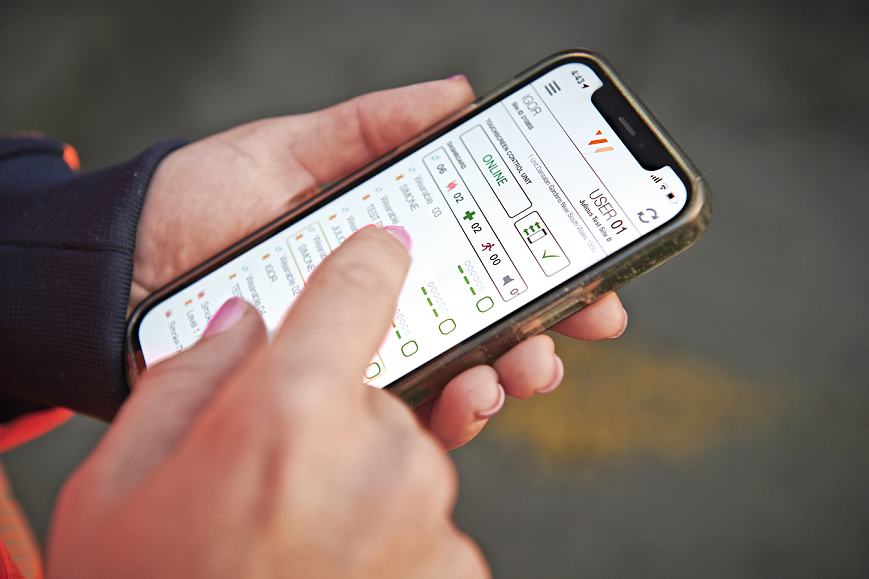Hearing protection is crucial for workers in loud environments to prevent hearing loss, a common occupational hazard. Prolonged exposure to high noise levels can cause permanent hearing damage, and workers from certain industries such as construction, manufacturing, and transportation are particularly vulnerable due to their noisy operations.
Understanding Noise Exposure
Noise-induced hearing loss results from chronic exposure to sound levels above 85 decibels (dB), roughly the noise level of heavy city traffic. In industries where heavy machinery, power tools, and equipment are used, sound levels can easily exceed 100 dB, necessitating effective hearing protection strategies.
Orisent’s evacuation siren sound levels range from 115dB for the combined evacuation trigger and siren or combined nurse call trigger and evacuation siren, to 127dB for the evacuation siren. These need to be loud enough to ensure every worker on the site can hear the siren and evacuate to the muster point. However, with Orisent’s evacuation sirens the sound pattern is adjustable so workplaces can select an on/off sound pattern they are comfortable with, and select how long the sirens sound for (up to 30 minutes).

Types of Hearing Protection
In environments where sound levels are above normal, it’s important for businesses to provide their workers with the appropriate PPE. This can include:
- Earplugs: Disposable or reusable, earplugs are inserted in the ear canal to reduce noise exposure. They are lightweight, portable, and ideal for intermittent use. Custom-molded earplugs provide a higher level of protection tailored to the user’s ear canal. Suppliers
- Earmuffs: Covering the entire outer ear, earmuffs provide a consistent level of noise reduction and are better suited for continuous use in extremely loud environments. They can be more comfortable for long-term wear and are easier to use correctly compared to earplugs.
- Electronic hearing protectors: These devices can enhance communication by filtering out background noise while allowing speech and other important signals to be heard. They are particularly useful in industries where communication is critical for safety and operational efficiency.
Major suppliers of hearing protection equipment include Honeywell, uvex, Seton, and 3M.
During a site evacuation or lockdown, it’s important to consider workers who are wearing hearing protection. If a business is not confident that evacuation sirens will be heard by these workers, businesses may wish to incorporate visual evacuation emergency cues such as lights or vibrations. Orisent offers evacuation strobe lights and a smartphone app that can push evacuation alerts to workers. We can also integrate our evacuation system with existing hardware and software on site.
Implementing a Hearing Conservation Program
Employers are required by regulations, such as those enforced by the Occupational Safety and Health Administration (OSHA), to implement a hearing conservation program if workers are exposed to daily average sound levels of 85 dB or higher over an 8-hour workday. Key components of an effective program include:
- Noise Assessment: Regular monitoring of noise levels to identify areas where hearing protection is needed.
- Hearing Protection Devices (HPDs): Providing suitable HPDs and ensuring they fit properly and provide adequate noise reduction.
- Training and Education: Educating workers about the risks of noise exposure and proper use of HPDs.
- Audiometric Testing: Conducting regular hearing tests to monitor workers’ hearing over time.
- Record Keeping: Maintaining records of noise exposure, audiometric tests, and training for compliance and health monitoring.
Challenges and Solutions
Despite the availability of effective HPDs, ensuring compliance among workers remains a challenge. This can be due to discomfort, communication difficulties, or lack of awareness about the risks of noise exposure. To overcome these challenges, employers can:
- Select HPDs that are comfortable and appropriate for the type of work and environment.
- Involve workers in the selection process to increase compliance.
- Provide training that emphasizes the importance of hearing protection and correct use of HPDs.
- Regularly review and update hearing conservation practices to adapt to new technologies and changes in the workplace environment.
It's important to test how well workers hear emergency alerts while wearing hearing protection. By running regular evacuation drills you can identify if workers cannot hear evacuation sirens or see evacuation lights, then incorporate that into your overall emergency plan. Ensure the plan lists personnel or areas where the emergency alert may be missed, and that fire wardens (or other response personnel nominated by management) understand what action to take to ensure these workers evacuate or lockdown when required.
Protecting workers from noise-induced hearing loss is not only a regulatory requirement but also a critical component of occupational health and safety. By understanding the risks, utilising the appropriate hearing protection, and implementing a comprehensive hearing conservation program, employers can significantly reduce the incidence of hearing loss among their workforce while ensuring they are included in the workplace emergency plan.


